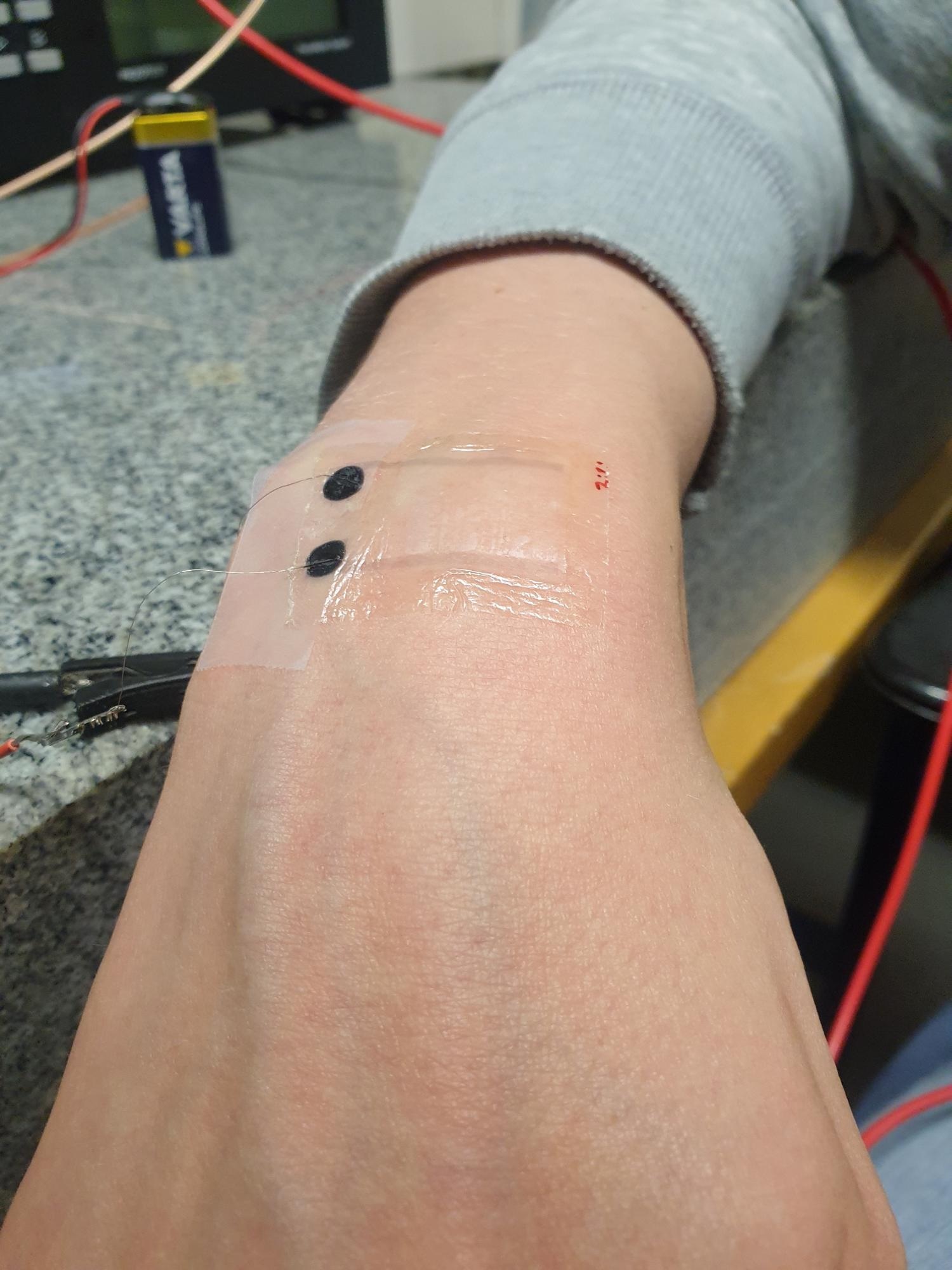AZoSensors speaks with Karem Lozano Montero from Tampere University. Karem is part of a research team that has worked to develop an ultrathin, self-powered and transparent printed pressure sensor, the applications of which are discussed in this interview.
Can you give our readers an overview of your recent research?
The interest in the development of ultrathin sensing devices has increased in recent years. Therefore, the fabrication of such devices can revolutionize the field of wearable electronics, especially for healthcare applications. My research focuses on the development of piezoelectric sensors using alternative fabrication methods to reduce fabrication costs and material waste without compromising the properties of the sensing devices. The main goal is to develop sensing devices that can be attached directly to the skin without any additional adhesives.
Can you give our readers an insight into the process that was involved when making these sensing devices?
In our group, our research focuses on the development of flexible devices using low-cost fabrication technologies. In particular, we used printed electronics technologies that are based on common printing methods, such as screen printing and inkjet printing.
Additionally, as our goal is to attach the sensing device directly to the skin, the fabrication of the sensing devices using biocompatible materials is important. Lately, the use of biocompatible polymers for electronic applications is increasing as they offer a vast range of properties. They are lightweight and possess flexibility as well as solution-processability, making them suitable for printed electronics technologies.
What are some of the health conditions these sensing devices monitor?
Currently, in our group, we have tested the use of the sensing device for the monitoring of the arterial blood pressure pulse wave. The information that can be obtained from this parameter can help to determine the health status of the cardiovascular system, such as arterial stiffness. Especially, arterial stiffness is considered an index of different cardiovascular diseases, including coronary artery disease, cerebrovascular disease, hypertension and heart failure.
What benefits can the transparency of the sensing devices provide?
When developing flexible sensing devices for healthcare applications, the main goal is to integrate them into long-term monitoring systems. Therefore, transparency is a key property that allows the development of almost imperceptible devices that provide patients with comfort and privacy.

The transparent sensor device. Image Credit: Karem Lozano Montero/ TAU
What makes these sensing devices energy-efficient?
The working mechanism of the sensing device is based on piezoelectricity, which converts mechanical energy into electrical energy. In this case, it is not necessary to provide any external voltage supply to the sensing device. The sensors can work autonomously, reducing energy consumption at the same time. Additionally, this can lead to the development of energy-autonomous systems.
Can you describe the role that piezoelectric materials played in the development of the sensing devices?
The piezoelectric layer plays a major role in the sensing device, which can be considered as the core sensing layer. In our work, we have used the electroactive copolymer P(VDF-TrFE) which is compatible with solution-based printing methods and allows the fabrication of flexible devices.
What are the next stages in the development of these sensing devices?
We have developed a simple fabrication method of a flexible piezoelectric sensor for healthcare applications. The next step is to study the suitability for clinical use of such devices. However, the mechanical stability of the devices and the integration of the sensing device in a monitoring system need to be analyzed in more detail.
What are some future application areas that you would like to explore using these sensing devices?
These sensing devices can be used for energy harvesting applications. One of the main difficulties when developing wearable electronics is the use of traditional batteries as power sources, limiting the flexibility and skin-conformability of the systems. It can be beneficial to study mechanical energy harvesters due to the abundant mechanical energy in the environment. For example, energy could be harvested from human movements allowing the development of wearable electronic devices for long-term use. Additionally, piezoelectric sensors can be used as energy sources due to their simple fabrication and direct mechanical-to-electrical conversion capability.
What are your predictions for the future of wearable electronics? What developments could we potentially see in the next 5 to 10 years?
The evolution of wearable electronics will lead to the development of miniaturized, energy-autonomous and highly flexible devices. Additionally, wearable electronics for healthcare applications will integrate different sensing devices for the monitoring of several signals that will allow a more extensive analysis of the health status. This will be combined with the development of self-powered systems by developing new energy sources based on energy harvesting mechanisms.
Where can readers find more information?
Readers can find more information on our website. The research paper can be found here.
About Karem Lozano Montero
 Karem Lozano Montero is currently a Doctoral Researcher at the Printable Electronics Research Group at Tampere University (Finland). She received her B.Sc. in Electronic Systems Engineering from Polytechnic University of Catalonia, Barcelona, Spain in 2015 and her M.Sc. degree in Electrical Engineering from Tampere University in 2019. Her research focuses on the development of ultra-thin flexible printed sensors and energy harvesters for electronic skin applications.
Karem Lozano Montero is currently a Doctoral Researcher at the Printable Electronics Research Group at Tampere University (Finland). She received her B.Sc. in Electronic Systems Engineering from Polytechnic University of Catalonia, Barcelona, Spain in 2015 and her M.Sc. degree in Electrical Engineering from Tampere University in 2019. Her research focuses on the development of ultra-thin flexible printed sensors and energy harvesters for electronic skin applications.
Disclaimer: The views expressed here are those of the interviewee and do not necessarily represent the views of AZoM.com Limited (T/A) AZoNetwork, the owner and operator of this website. This disclaimer forms part of the Terms and Conditions of use of this website.